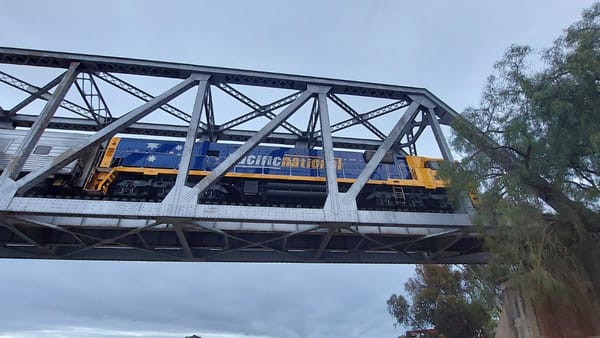‘I’m scared of being homeless’: Murray Bridge families need solutions to rental crisis
Rents have risen by more than 50 per cent since the pandemic began, but there and there still aren’t enough properties to go around. Here’s what locals are saying.

Locals support locals – that’s why this post advocating for local people is free to read. Your support helps Murray Bridge News tell important local stories. Subscribe today.

If it wasn’t for the generosity of a close friend, Michelle* doesn’t know where she and her two teenagers would turn.
All three of them are living at the friend’s house, for now – a stop-gap arrangement they had hoped would only be for a month or two.
They have been there since last September.
Michelle has a good, steady job with a major employer; but in the current housing market, that doesn’t count for much.
There aren’t enough houses to go around.
“It hasn’t been nice,” she said.
“I’ve had viewing after viewing after viewing, but pretty much been rejected.
“For every property I’ve been to there’s been like 50 people viewing it.”
Lately agents hadn’t even been opening homes up for viewings, she said: “I apply, hear ‘two weeks’ and get told no”.
She is not the only one.

Another local mum of six told Murray Bridge News her rental applications kept getting knocked back, despite good references and a four-and-a-half year history at the property her landlords were now selling.
“My real estate agent is trying to get us something, but they literally don’t have anything to rent out,” she said.
“It is really starting to consume me and my mental health.
“I’m scared of being homeless.”
Another mum said she, her three teenagers and their dog faced the prospect of moving back into a caravan when their 12-month lease ended.
They had already spent seven months in the van after moving to the Murraylands in late 2021.
“We are at least thankful we could afford a caravan and didn’t have to live in a tent,” she said.
Supply is short, but prices are ‘affordable’ … or are they?
The biggest problem facing would-be renters is a lack of supply.
The number of properties listed in regional SA might have gone up by 11% in the past year, but they were still down 60% from pre-pandemic levels, according to industry analysts Proptrack.
Industry data provider Corelogic confirmed that just 1% of properties in regional SA were now vacant, compared with 1.8% a year ago.
Just 11 rental properties were being advertised in the Murray Bridge district on industry-leading website realestate.com.au on Wednesday, at an average of $412 per week.
No rentals were available at Tailem Bend.
Proptrack senior economist Eleanor Creagh said the combination of increasing migration and a limited supply of new housing had put the nation’s rental market in dire straits.
“Advertised rents are recording strong price increases and vacancies are at historic lows,” she said.
“Without an imminent increase in supply, the stock of rental properties will remain low, exacerbating the competitive conditions renters currently face.”

As Murray Bridge News reported in February, the state government is currently building a dozen new Housing SA homes in Murray Bridge, and in the process of refurbishing four more.
The city’s council, meanwhile, is planning to open up an extra 113 hectares of land for housing; but rezoning it, let alone building new homes there, will likely take several years.
The one positive, according to Proptrack?
Regional South Australia has the most affordable rents in the nation – yes, even after increasing from an average of $340 per week a year ago and just $270 two and a half years ago.
Seventy-one per cent of rental properties on the market were advertised at a nationally “affordable” rate of less than $400 per week in April.
However, the median household income in Murray Bridge was around $1100 per week at the last census, so a $400-per-week rental would drag your average local family below the poverty line.
Low-income families would be worse off again, according to local homelessness service provider AC Care, which has been struggling to cope with a doubling of demand.

How do interest rates fit into the puzzle?
Coredata suggested gouging landlords were not to blame for rising rental costs – those costs had merely risen in step with property values and mortgage repayments.
The Reserve Bank of Australia has increased interest rates – which have a flow-on effect for mortgage holders – from 0.1% to 3.85% since last April to try and slow down the rising cost of goods and services.
If rates went up, people would have less money to spend, demand would reduce and non-housing costs would come down, according to the bank.
The Reserve Bank’s ultimate goal is to ensure “the economic prosperity and welfare of the Australian people”, alongside full employment and a stable dollar.
Michelle suggested the system wasn’t working.
“Banks need to stop being so greedy,” she said.
“Why do we need to raise interest rates?
“Why do we need this struggle?”
- Get help: Contact AC Care at 29 Bridge Street, Murray Bridge on 8531 4900 during business hours or call the Homelessness Gateway on 1800 003 308.
- More information: Visit www.realestate.com.au/insights, www.corelogic.com.au or www.rba.gov.au.
Murray Bridge News has chosen not to publish the names of the renters who contacted us for this story so as not to jeopardise any of their pending or future rental applications.





